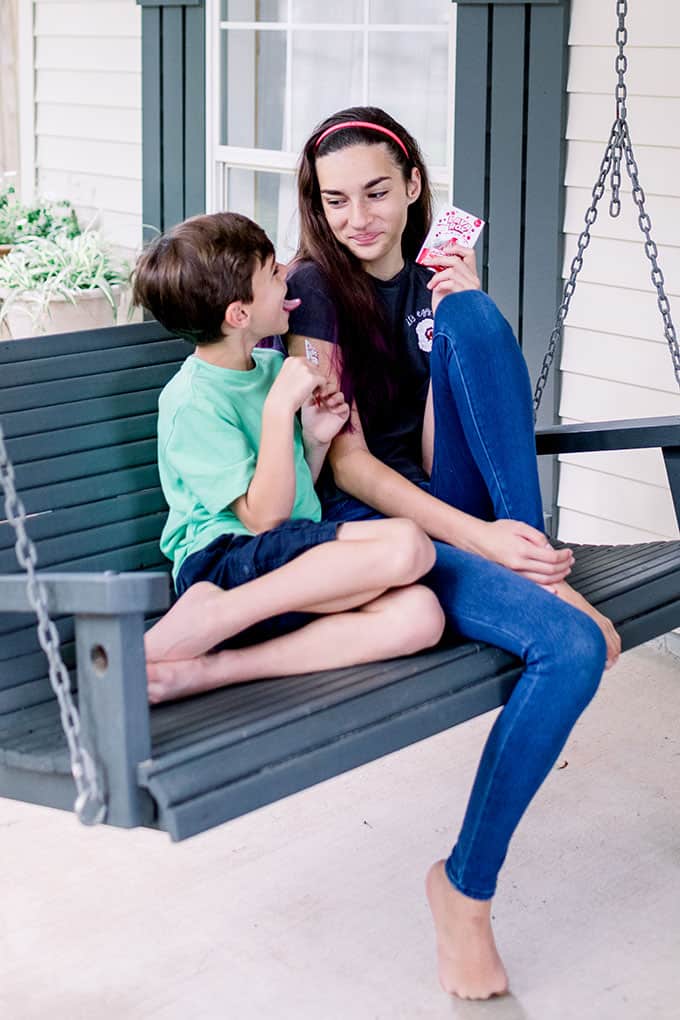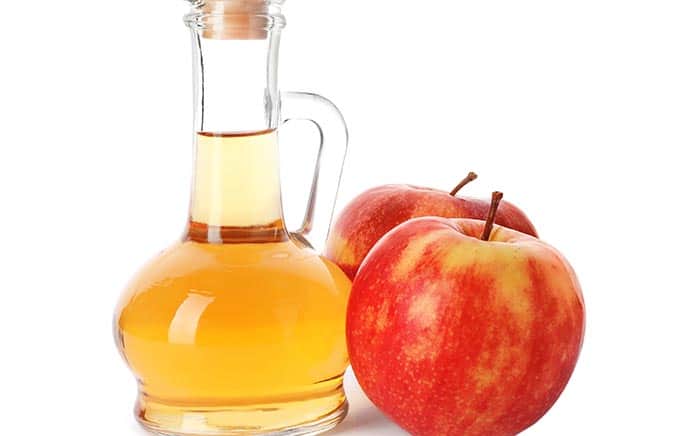This post is bought to you in partnership with AOR, Advanced Orthomolecular Research. All opinions below are my own.
When you’re busy and have kids, making sure your meals are probiotic-rich might not be at the top of the list. In the past, I mostly worried if my child had enough protein and fiber in their day -and so do most of the parents in my 100k+ parent community.
However, we have all heard and read about how beneficial probiotics can be for adults, and research shows that it can be very beneficial for kids as well. That said, if you’re considering probiotics for your child, make sure to speak to your pediatrician first.

If you’re new here and wondering why you and your child should eat probiotic foods and what exactly are the benefits of probiotics; you’re at the right place.
While there are many probiotic supplements out there, few taste as good as they say -according to my kids- and when they are unable to swallow a pill; what’s left?
Well, let me tell you that recently I’ve discovered Lava Rox . Yes, like PopRocks but with benefits and sugar-free. Lava Rox are an innovative way to get my kids to take laboratory tested, high-quality probiotics, I know will benefit their health.

In addition to Lava Rox, I also try to naturally incorporate probiotic foods into our meals. And yes, yogurt is one of them but only one of my 3 kids eats yogurt, so what then?
What are Probiotics?
Probiotics are “good” bacteria beneficial to the body and aid in gut health. These microorganisms help our bodies digest food, destroy harmful bacteria, and produce vitamins.
Even better, probiotics are found in many foods we regularly consume, such as dairy and fermented foods, but more on that later.
However, it’s important to keep in mind that you can’t get enough probiotics from food alone which is where a good supplement comes in handy. In addition to eating a healthy diet, having my kids take a supplement like Lava Rox is a great way to make support gut health and digestion.
Types of Probiotics
There are numerous types of probiotic bacteria, and most come from two groups, Lactobacillus and Bifidobacterium; both of which Lava Rox contains 5Billion CFUs of each.
Lactobacillus
This is the most common probiotic found which is found in yogurt and other fermented foods such as kimchi, sauerkraut, and kefir. It is helpful for those with lactose intolerance and can aid in *ahem* irregular, frequent bathroom troubles (diarrhea).
Bifidobacterium
Found in dairy products such as kefir, certain cheeses it helps to ease symptoms of IBS (irritable bowel syndrome).
Probiotic Benefits
So just how great are probiotics? Well, let’s take a look at their most significant benefits:
- Balance your Digestive System
Bacteria are known as either “good” or “bad.” We all know the “bad” as pesky sickness-causing microorganisms, but what about the “good”? True to the prefix “pro,” probiotics help to regulate the natural balance of gut bacteria. These are the good guys, and work to help you experience the benefits of a healthy gut, better digestion, less bloating, and even clearer skin.
- Prevent and treat diarrhea
Bacteria such as the Lactobacillus can bring a bout of diarrhea to a halt in infants and children. This is super healthy for those early years and another example of how kids benefit from probiotics.
- Reduce Symptoms in Certain Digestive Disorders
While probiotics can’t cure ulcerative colitis and IBS, both Lactobacillus and Bifidobacterium have proven to reduce the severity of the symptoms.
- Immune Support
Certain strains of probiotics work to inhibit the growth of harmful bacteria and aid in the production of natural antibodies, which fight off bad bacteria.
Probiotic Benefits for Kids
Probiotics shouldn’t be limited to adults, kids also reap many benefits from consuming and taking supplemental probiotics. Probiotics also help with better digestion and treating eczema and allergies.
Unfortunately, probiotics often come in the form of a pill which isn’t the best kid-friendly approach, and gummies tend to be very low dose. As a mom, I was like… how many gummies should I give my kid? At that point, I felt like I was giving my kid a significant amount of sugar just to take a supplement.
Good thing Lava Rox caught on that parents don’t want to give their kids sugar just to get them to take their supplements by making their supplement sugar-free and with a cherry flavor that kids love.

How to get Probiotics Naturally
Along with a healthy diet, that includes probiotic-rich sources like the foods below, the next best source of natural probiotics would be a supplement.

Many parents begin supplementing with probiotics to help their kids restore their gut bacteria (among other things) during and after antibiotic treatments and help their absorption of nutrients from food.
Because it can be difficult to know the dosage of probiotics in food, I’ve added Lava Rox as a supplement to my kid’s diet of probiotic foods.
Probiotics Foods
The benefits of eating foods rich in probiotics go further than gut health. Many of these items also offer different sources of vitamins and minerals for a balanced diet. Let’s look into the top food sources for probiotics:
Yogurt

To reap the full benefits, choose yogurt that doesn’t contain added sugars or artificial ingredients. To sweeten, stir with honey, also rich in probiotics, and fresh fruit.
The biggest drawback on relying on yogurt to provide probiotics for kids is that the type of yogurt most kids like are loaded with added sugar and one of my kids is lactose intolerant; so for him, yogurt is out.
Kefir

This fermented milk drink is made from adding cultures of lactic acid bacteria and yeast, kefir, to cow’s milk or any dairy-free milk, like coconut milk.
It’s a superior source of probiotics, compared to yogurt and kimchi, and can be consumed by those with lactose intolerance. You’ll find kefir available in regular, fruit, and chocolate flavors in the dairy aisle.
Sauerkraut

Sauerkraut is an excellent source of probiotics, and it’s rich in vitamin C, B, and K. Serve it in a classic, Rueben sandwich, on top hot dogs, or tossed in a salad.
It’s also easy to incorporate inside a school lunch by rolling it inside deli meats too.
Kombucha
You’ve seen the refrigerated bottles at the local health food store or a homemade batch sitting on the shelf in your friend’s fridge, but what is kombucha??
This fermented, probiotic drink is made with SCOBY, a colony of live bacteria and yeast, tea, and sugar. The bacteria and yeast work together to create a fermented, fizzy drink that’s packed with B vitamins, enzymes and is known to improve digestion.
Keep in mind that kombucha, like all fermented beverages, is slightly alcoholic. Some versions contain more alcohol than others, depending on how long it was fermented so make sure to check the label before handing it to the kids.
Apple Cider Vinegar

This fermented liquid is widely known and used for everything from alkalizing the body to blemish control. For those interested in taking ACV orally, first thing in the morning on an empty stomach, with 1 part ACV with three parts water.
No, it doesn’t taste amazing, but the benefits are all there. Unfortunately, you’ll have no luck using this method on the kids -unless mixed with something very sweet like grape juice. It’s best to use it in a vinaigrette on the dinner salad or you can make your own apple cider vinegar beverage with these ideas. I’m positive the kids will love the Limeade.
Cheese

If you need another reason to carry on with the cheese obsession here, it is! Cottage cheese along with soft cheeses such as Gouda, sharp Cheddar, parmesan are packed with probiotics!
Even better, you won’t have a hard time convincing the kids to eat this probiotic-rich food. You know what to do with it, pack into sandwiches, salads, wraps, or if you like cottage cheese serve it for breakfast with fresh fruit, for a high protein and probiotic boost.
Pickles

Not just any pickles- you want to make sure it’s pickles brined with salt water, not vinegar, which inhibits the growth of healthy bacteria. It also helps that these are a favorite condiment for sandwiches, wraps, and snacks.
Olives

Like pickles, olive brined in saltwater contains a good source of probiotics. Toss them into pasta salads, wraps, or over hummus with celery for a quick mid-day snack.
Before dinner, we often have a plate of olives and cheese cubes on the counter, and my kids snack on them while setting the table.
Kid-Friendly Probiotic Foods
While you might not get the kids on board with sauerkraut and kombucha, items like yogurt, cheese, pickles, olives, and even kefir are all kid-friendly. Plus, they’re super easy to incorporate in packed lunches.
Recipes to Make with Foods High in Probiotics
Now that we know the foods, here are some delicious ways to make them a part of your everyday.
How could I not add this in there? Crispy on the outside, warm beef… with sauerkraut? Yummm!
Mangos are known to prevent the loss of good gut bacteria. Whip up these summery popsicles by replacing the coconut milk with kefir, for a frozen treat packed with probiotics.

Charcuterie Board
You know you’ve wanted to try this, and now you have a good reason! This charcuterie board features some of the tastiest, probiotic-rich foods like cheese, pickles, and olives!

This healthy snack tastes like dessert.
One of my kid’s favorite summer treats, no worries, freezing won’t kill any of the “good” bacteria. It only makes them go dormant, but they become active once more when eaten or brought to room temperature.
If you love olives, this one is for you!

Another reason kefir is a total keeper. Swap the milk for kefir, and you’ll get a deliciously creamy breakfast with many benefits.
Probiotics for children may offer similar health benefits as for adults — from supporting healthy digestive bacterial growth to boosting their immune system. Whether you incorporate more of the top probiotic foods above into your kids’ meals or supplement with high-quality probiotic supplements like Lava Rox, consistency is key.
Before introducing Lava Rox into your child’s diet, however, speak with their pediatrician to figure out if probiotics are right for them. Once you’ve been given the green light, use this list of foods and Lava Rox for kids as your starting point.





Elena says
Genious post. I have lactose intolerant kids and I always thought my kids had to get probiotics from dairy. these are great!
Laura Fuentes says
I’m so glad these were helpful! Check out how I used these foods in lunches in this post.